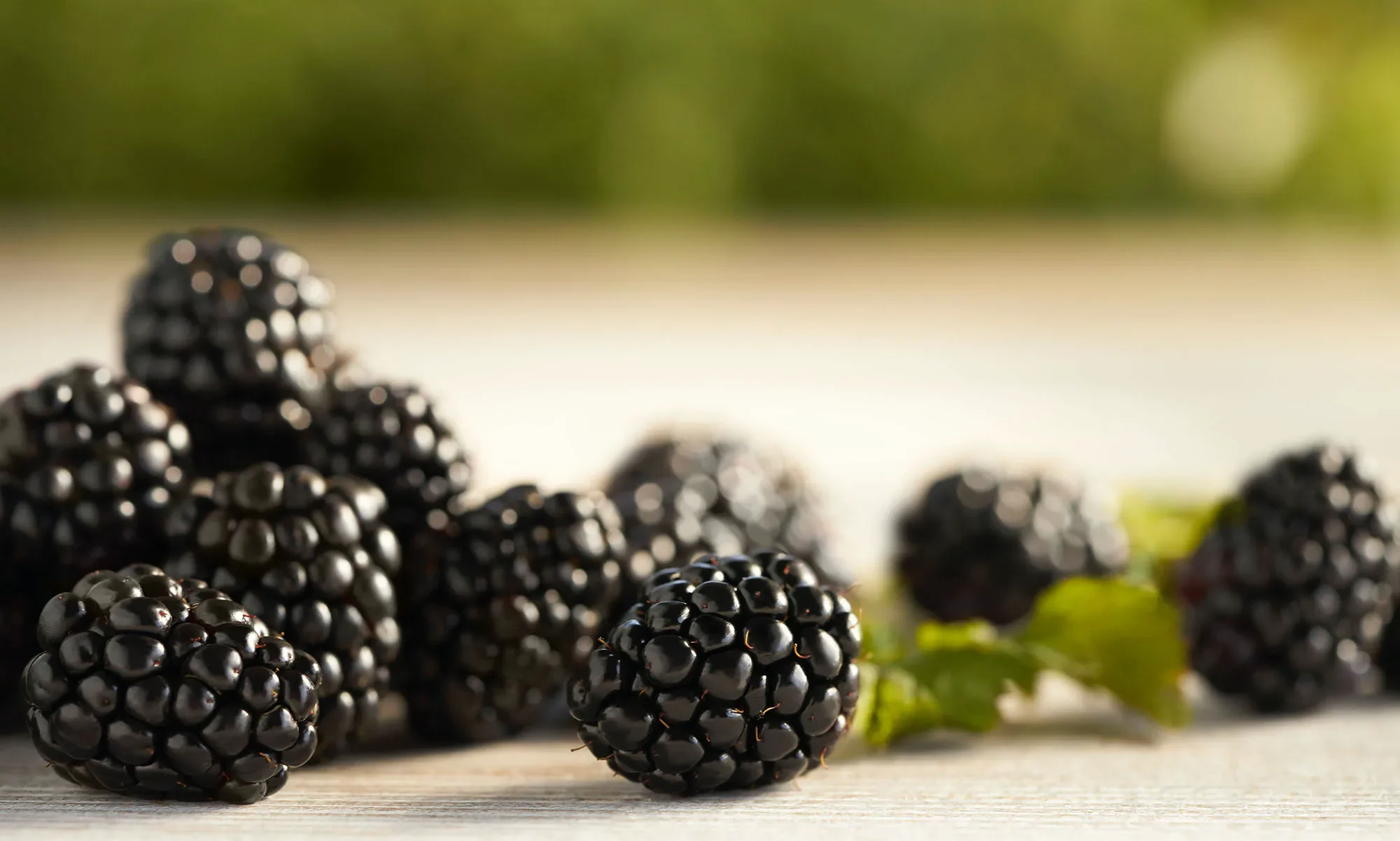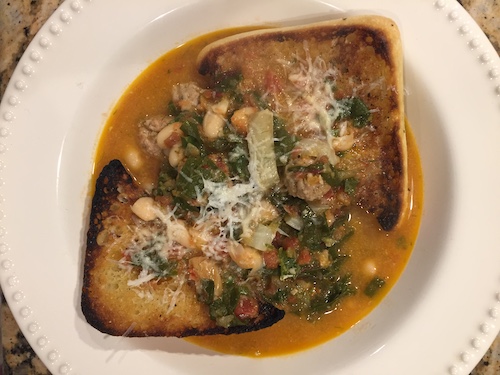For this soup, I prefer Pecorino Romano’s salty flavor, but Parmesan can be substituted. Although frozen greens may be used, fresh vegetables add a depth of flavor that is noticeable A traditional way to serve this soup is with a poached* or soft-cooked egg spooned on top of the toast before the soup is ladled into the bowl. A vegetarian version of this soup is easy—skip the sausage and use vegetable broth.
Tuscan White Bean and Escarole Soup (Acquacotta)
Yield: 8-10 servings
2 hot Italian sausages, chopped into 1/2-inch pieces (Alternatives: pancetta, smoked bacon)
1 large onion, chopped coarse
2 celery ribs, chopped coarse
3—4 large garlic cloves, peeled
1 (28-ounce) can whole peeled tomatoes
Sea salt and freshly-ground black pepper
1/8 teaspoon red pepper flakes
1/2 teaspoon smoked paprika
6 cups low-sodium organic chicken bone broth
1 fennel bulb and fronds (Alternatives: 1/3-1/2 lb. celery + 1/2 tsp. fennel seeds)
1 piece Parmesan cheese rind, about 5 by 2 inches (or use the rind from the Pecorino Romano cheese (below) if it has a rind)
2 (15-ounce) cans organic cannellini beans, drained and rinsed—reserve the liquid
1 ten-ounce head escarole, trimmed and cut into 1/2-inch pieces (8 cups) (Alternatives: fresh baby kale, Swiss chard, curly endive)
2 large egg yolks
1/2 cup fresh parsley, chopped
1 tablespoon basil pesto
1 tablespoon Pernod liqueur
Sea salt and freshly-ground black pepper
1/4 cup extra virgin olive oil
Grated Pecorino Romano cheese (or Parmesan)
Lemon wedges
Toast
10 (1/2-inch-thick) slices thick-crusted country bread, like ciabatta
1/4 cup extra-virgin olive oil
Sea salt and freshly-ground pepper
FOR THE SOUP
Prepare the fennel: Mince 2 tablespoons of the fronds, discard the stalks. Cut the bulb in half and cut into 1/2-inch pieces.
Add the Italian sausage pieces to a 5-1/2-quart Dutch Oven and cook over medium heat until lightly browned.
Pulse onion, celery, and garlic in food processor until very finely chopped, 15 to 20 pulses, scraping down sides of bowl as needed. Transfer onion mixture to the cooked sausage pieces in the Dutch oven. Add tomatoes and their juice to the now-empty processor and pulse until tomatoes are finely chopped, 10 to 12 pulses; set aside.
Stir olive oil, 3/4 teaspoon salt, pepper flakes, and smoked paprika into sausage-onion mixture. Cook over medium-high heat, stirring occasionally, until light brown fond begins to form on bottom of pot, 12 to 15 minutes—watch carefully to avoid burning. Stir in tomatoes, increase heat to high, and cook, stirring frequently, until mixture is very thick and rubber spatula leaves distinct trail when dragged across bottom of pot, 9 to 12 minutes.
Add broth, chopped fennel bulb (or celery and fennel seeds), and cheese rind to the pot and bring to simmer. Reduce heat to medium-low and simmer until fennel (or celery) begins to soften, 5 to 7 minutes. Stir in beans and escarole (or other greens) and cook until fennel is fully tender, about 10 minutes.
Whisk egg yolks and reserved bean liquid together in bowl, then stir into soup. Stir in parsley, pesto, fennel fronds, and Pernod. Season with salt and pepper to taste and drizzle with the olive oil. Stir. Taste.
FOR THE TOAST
Adjust oven rack about 5 inches from broiler element and heat broiler. Place bread on aluminum foil–lined rimmed baking sheet, drizzle with olive oil, and season with salt and pepper. Broil until bread is deep golden brown.
Place 1 slice bread in bottom of each individual bowl. Add a poached egg on top of the toast, if using. Ladle soup over toasted bread. Serve, passing Pecorino and lemon wedges separately.
*POACHED EGGS
Heat water a large pot to 180 degrees, which is about the temperature at which water is quivering, but not quite simmering.
Crack each egg into a separate small dish. Pour each egg into a fine mesh strainer, and gently swirl it around until tiny bits of excess white is drained away. You’ll be left with a nice, tight egg. Gently lower the strainer—one egg at a time—into the water, move it back and forth a little bit to make sure the egg isn’t stuck, and then carefully roll the egg out.
Once four eggs are in the water, keep them moving around, turning them over from time to time with a slotted spoon, so that they cook evenly. After about 3-1/2 to 4 minutes, your eggs should be cooked.* Repeat for the remaining eggs. Once eggs are perfectly poached, remove from the water, and let drain on a plate lined with paper towels or a clean kitchen towel.
*Check the eggs after 4 minutes: Use a slotted spoon to lift an egg out of the water, and feel the white for firmness. If it’s not quite done, slide it back in for another minute or so. Let cook until the whites are just set, but the yolks are still completely runny.

